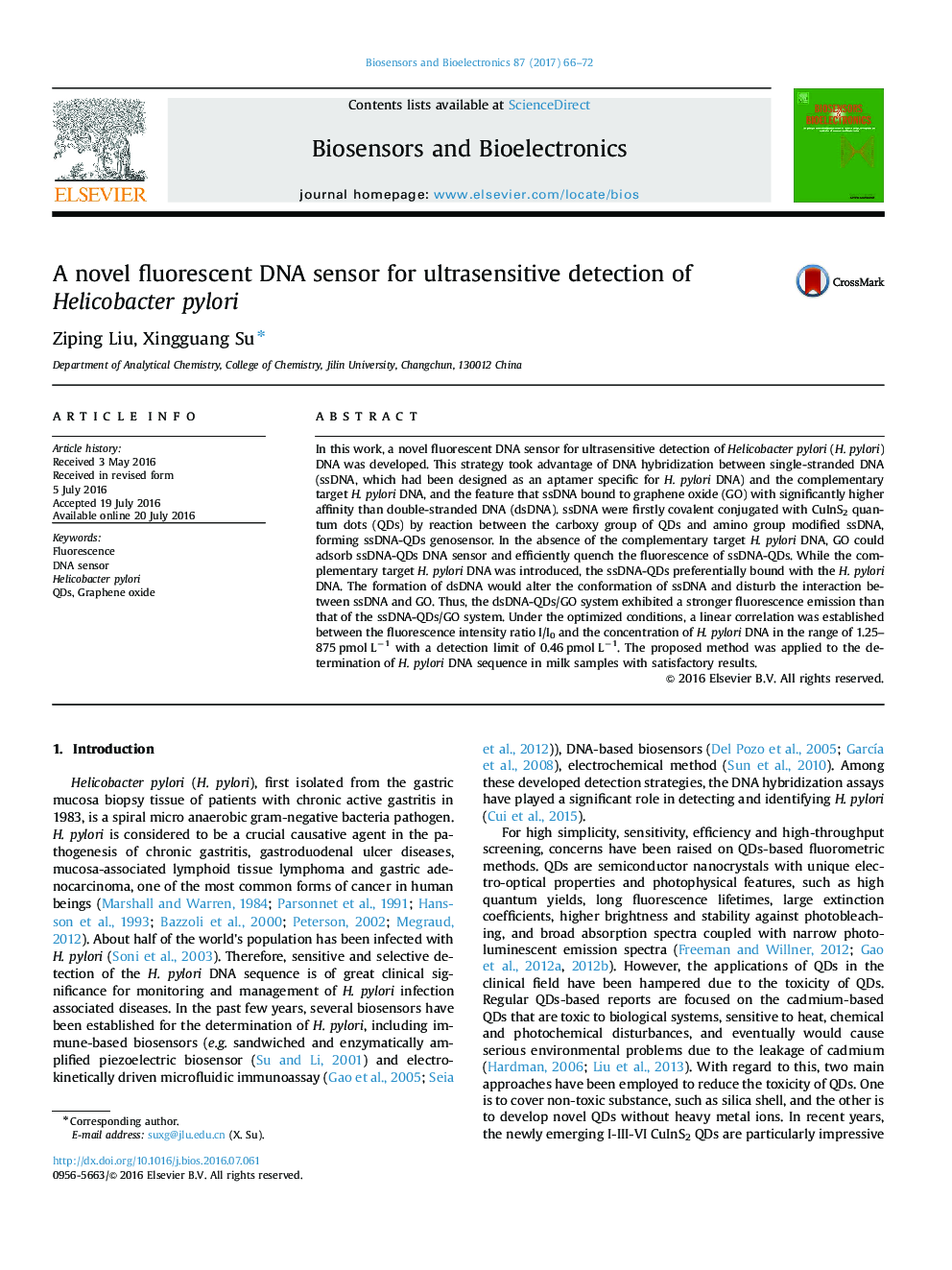| کد مقاله | کد نشریه | سال انتشار | مقاله انگلیسی | نسخه تمام متن |
|---|---|---|---|---|
| 866161 | 1470944 | 2017 | 7 صفحه PDF | دانلود رایگان |
• A novel fluorescent DNA sensor for Helicobacter pylori detection was developed.
• The method utilized the feature that ssDNA has higher affinity towards GO than dsDNA.
• Ultra-sensitivity and good selectivity were obtained.
• The sensor was successfully applied to detect Helicobacter pylori DNA in real sample.
In this work, a novel fluorescent DNA sensor for ultrasensitive detection of Helicobacter pylori (H. pylori) DNA was developed. This strategy took advantage of DNA hybridization between single-stranded DNA (ssDNA, which had been designed as an aptamer specific for H. pylori DNA) and the complementary target H. pylori DNA, and the feature that ssDNA bound to graphene oxide (GO) with significantly higher affinity than double-stranded DNA (dsDNA). ssDNA were firstly covalent conjugated with CuInS2 quantum dots (QDs) by reaction between the carboxy group of QDs and amino group modified ssDNA, forming ssDNA-QDs genosensor. In the absence of the complementary target H. pylori DNA, GO could adsorb ssDNA-QDs DNA sensor and efficiently quench the fluorescence of ssDNA-QDs. While the complementary target H. pylori DNA was introduced, the ssDNA-QDs preferentially bound with the H. pylori DNA. The formation of dsDNA would alter the conformation of ssDNA and disturb the interaction between ssDNA and GO. Thus, the dsDNA-QDs/GO system exhibited a stronger fluorescence emission than that of the ssDNA-QDs/GO system. Under the optimized conditions, a linear correlation was established between the fluorescence intensity ratio I/I0 and the concentration of H. pylori DNA in the range of 1.25–875 pmol L−1 with a detection limit of 0.46 pmol L−1. The proposed method was applied to the determination of H. pylori DNA sequence in milk samples with satisfactory results.
Journal: Biosensors and Bioelectronics - Volume 87, 15 January 2017, Pages 66–72
